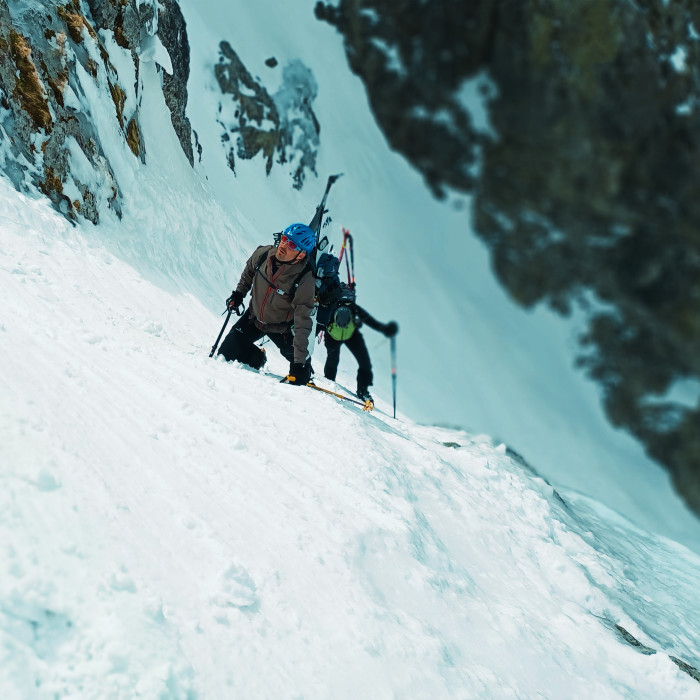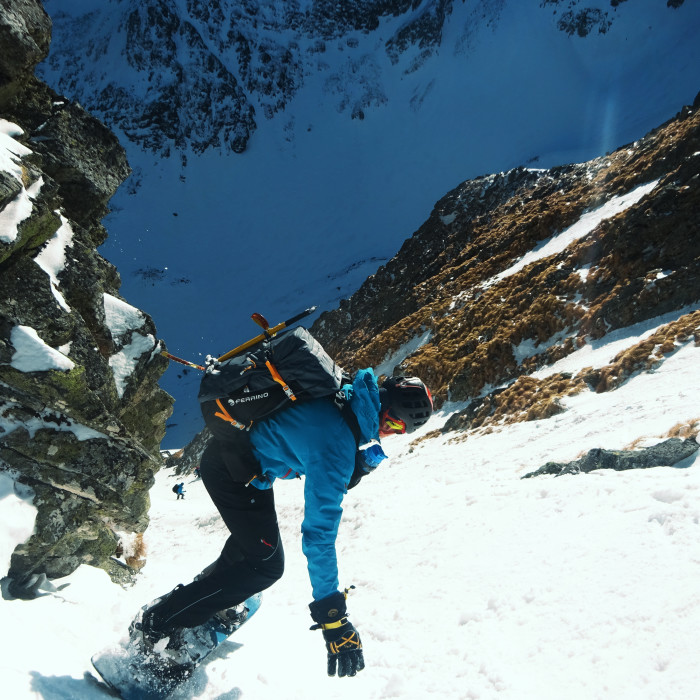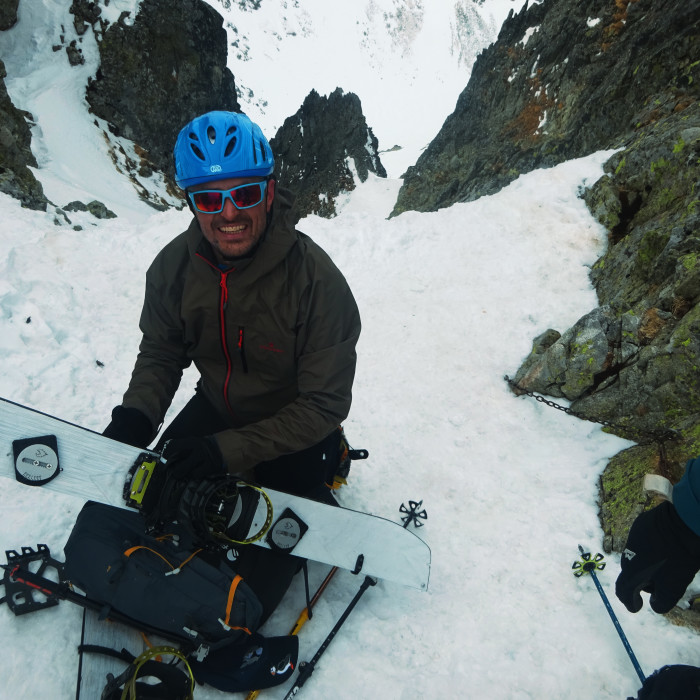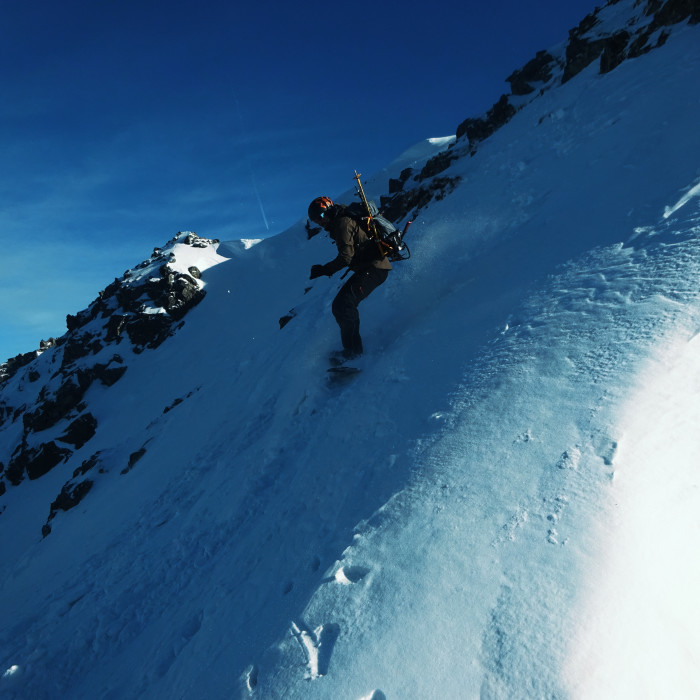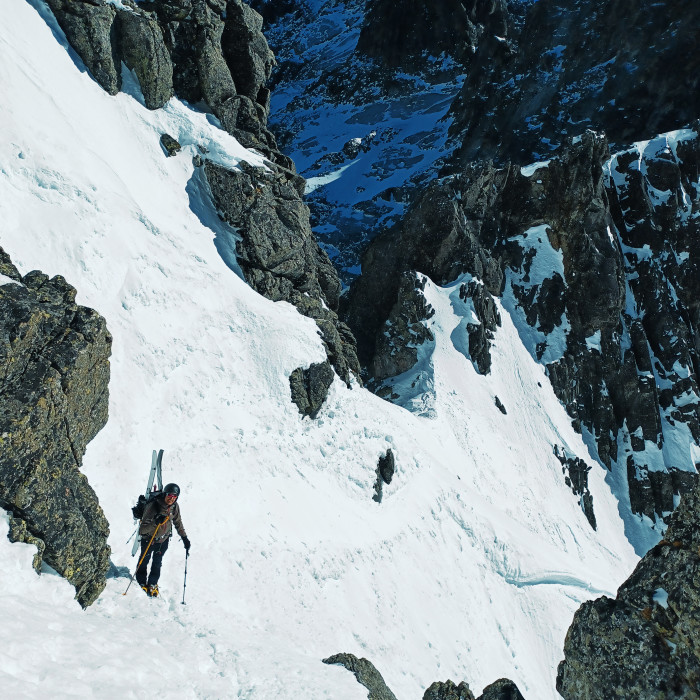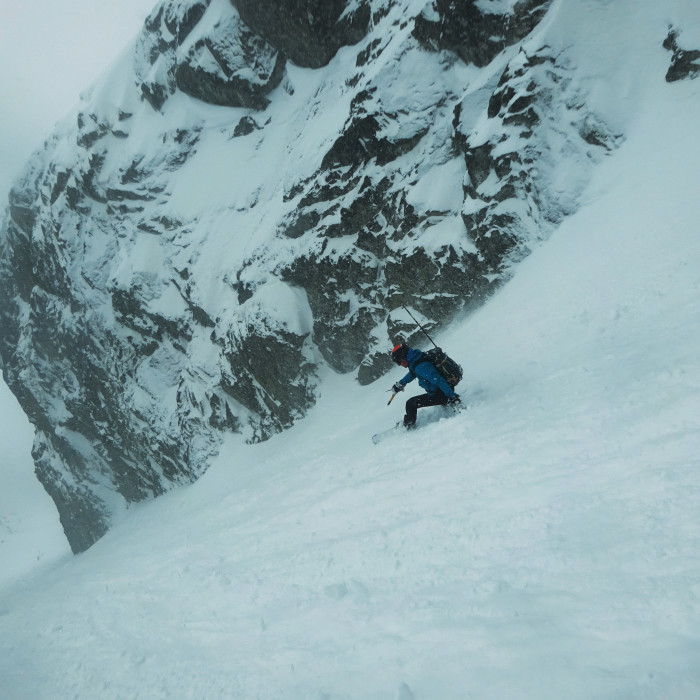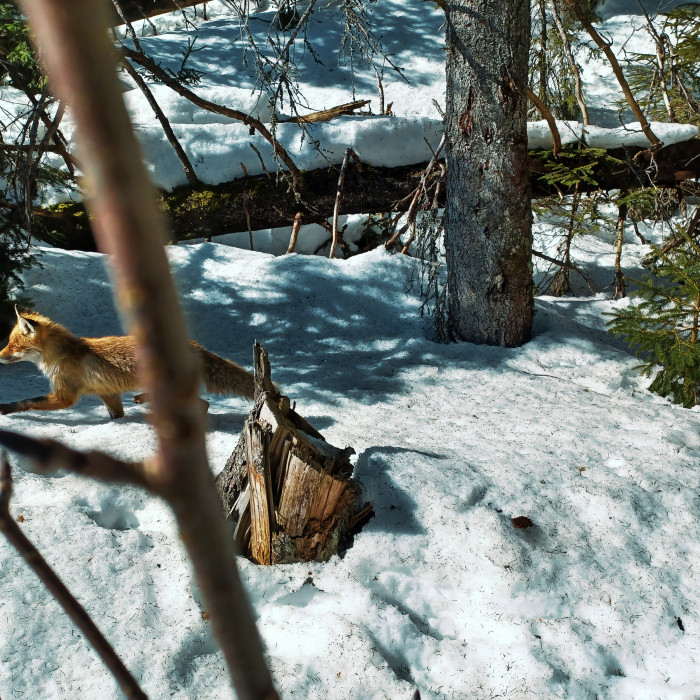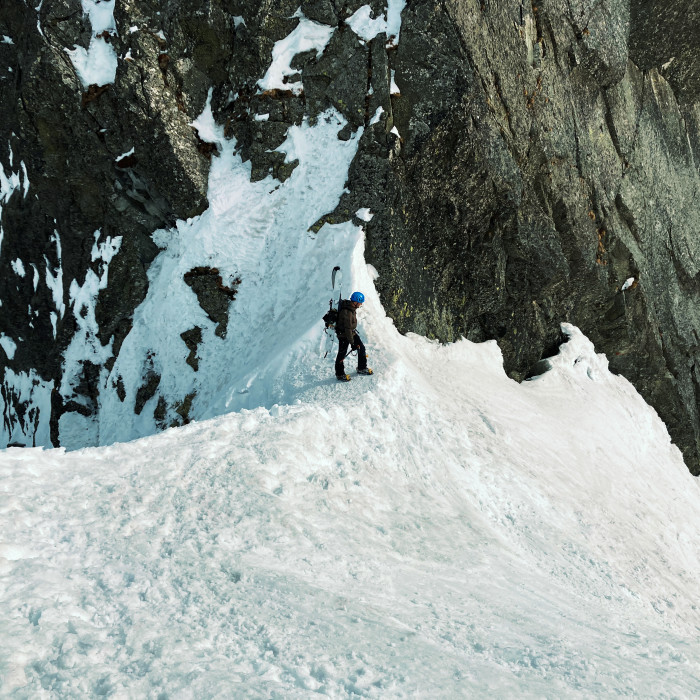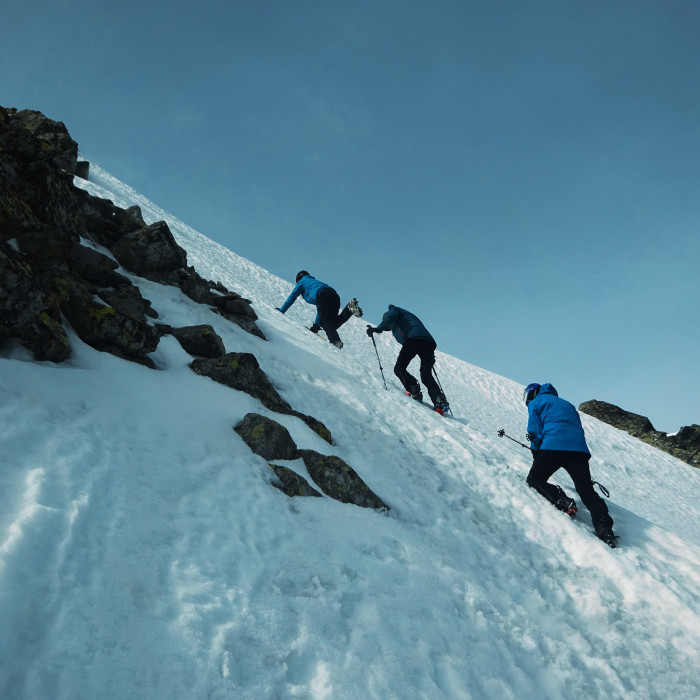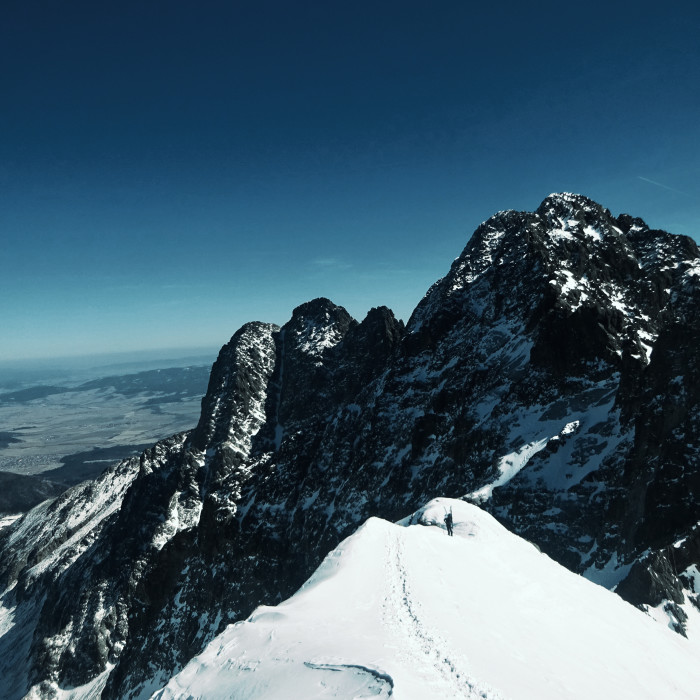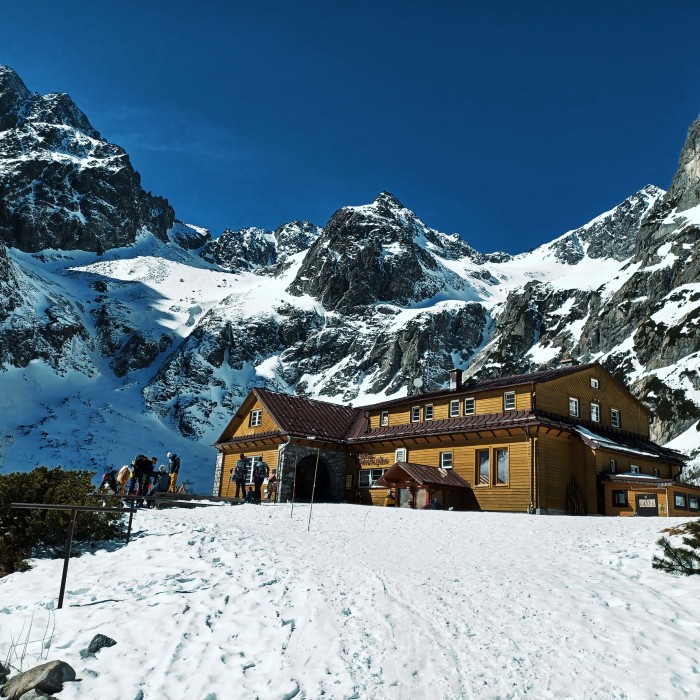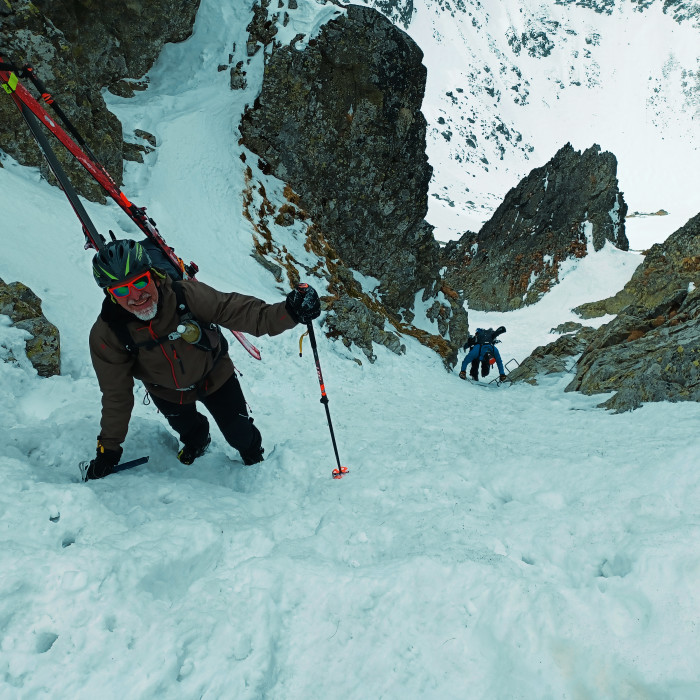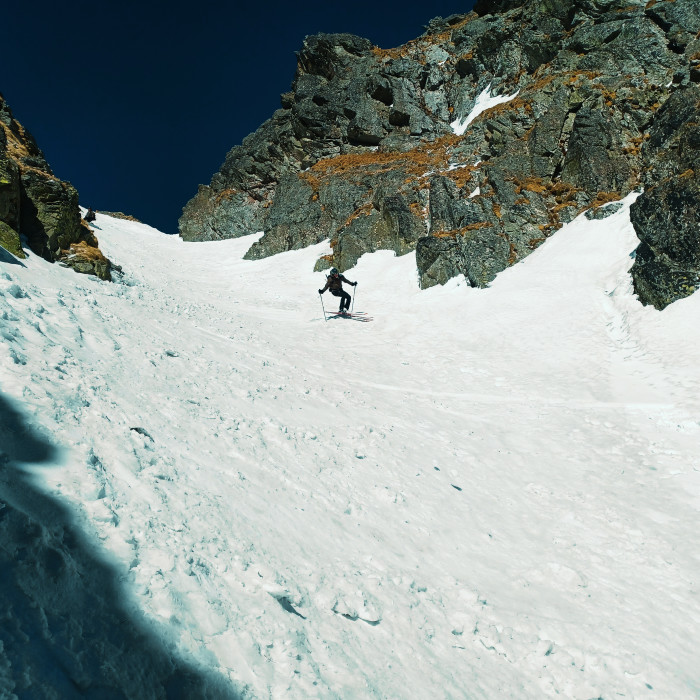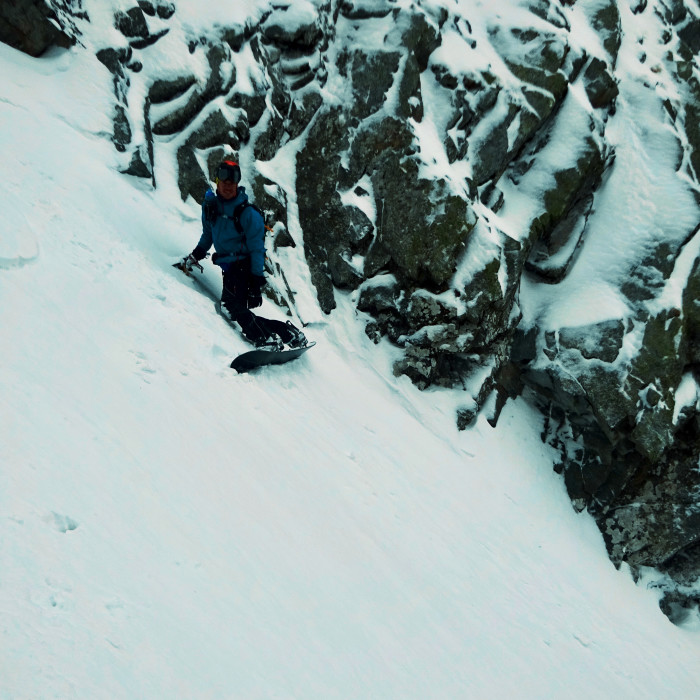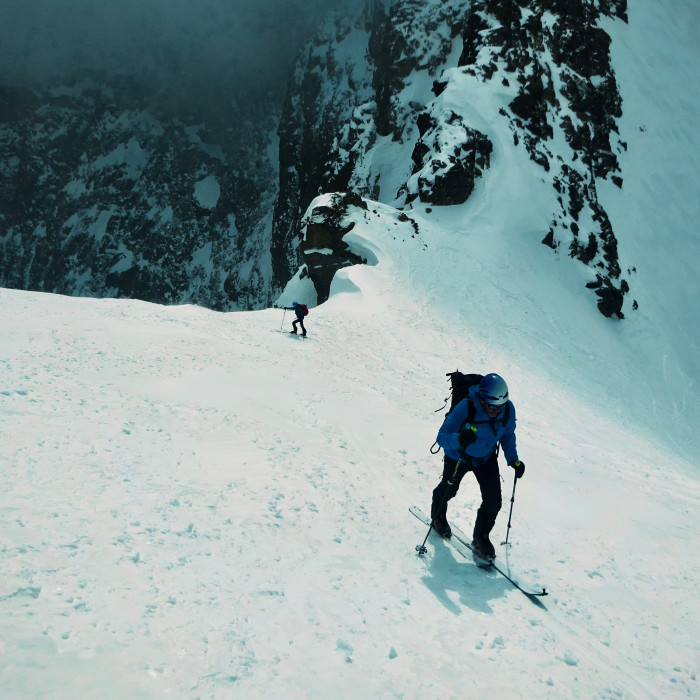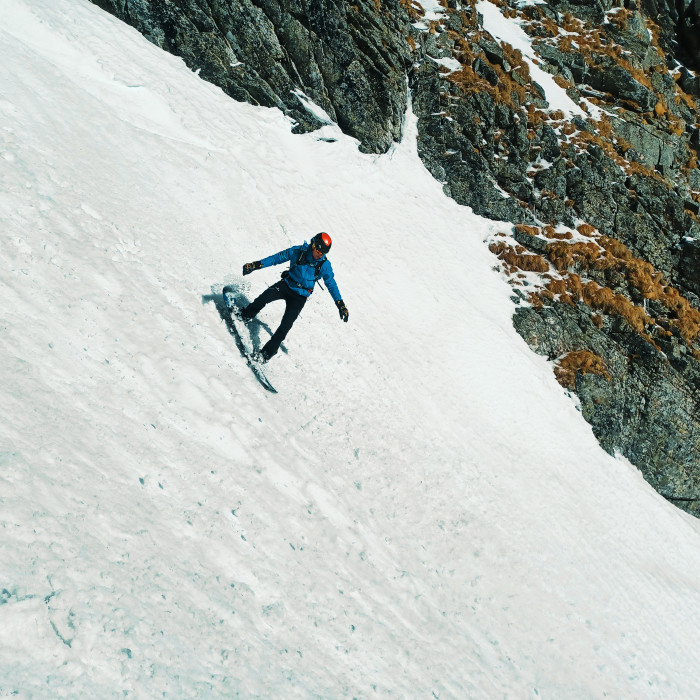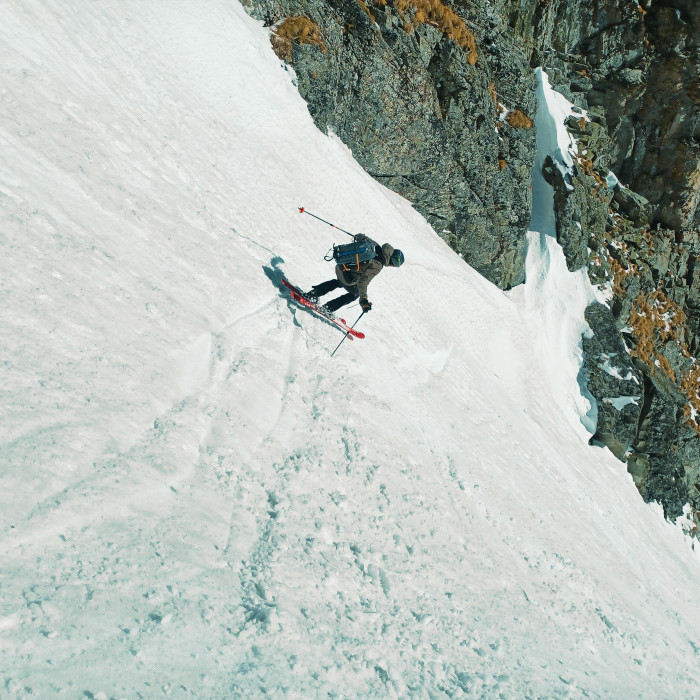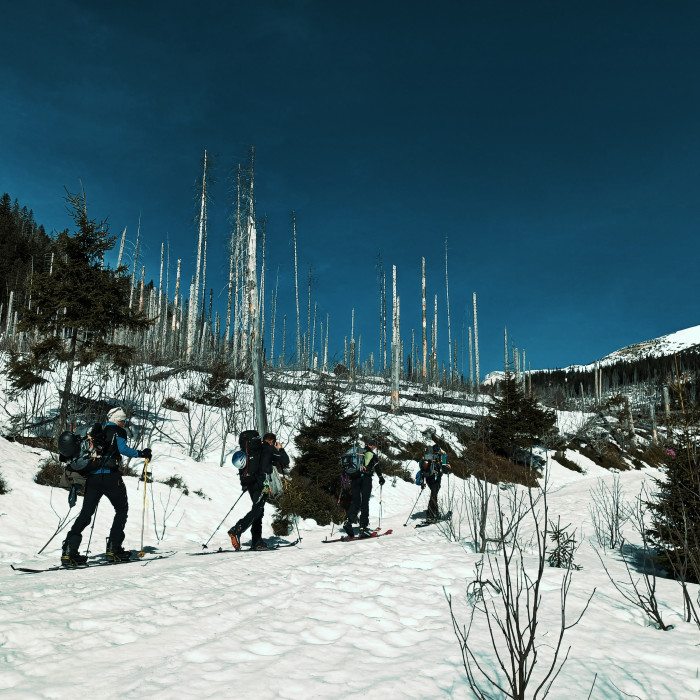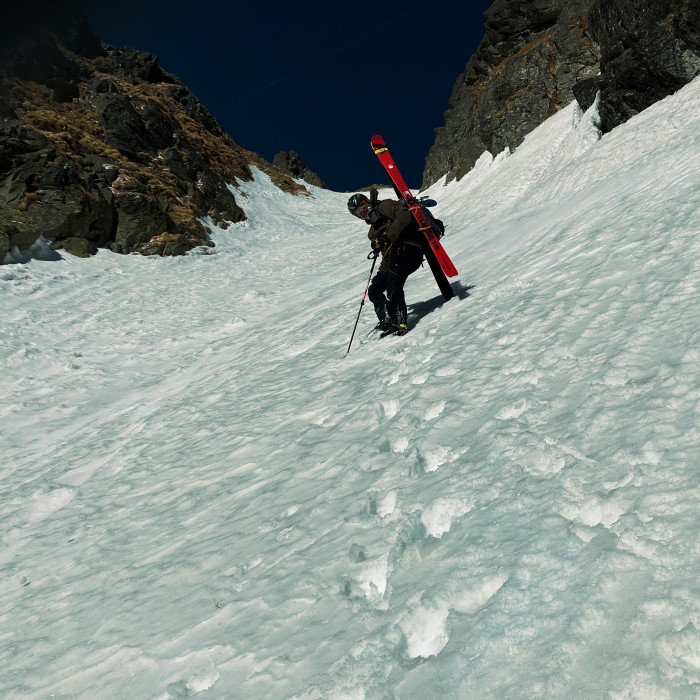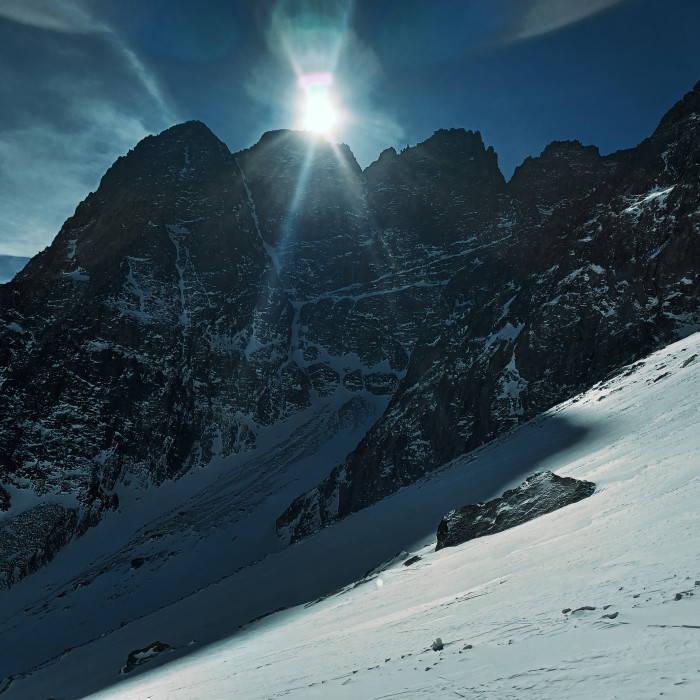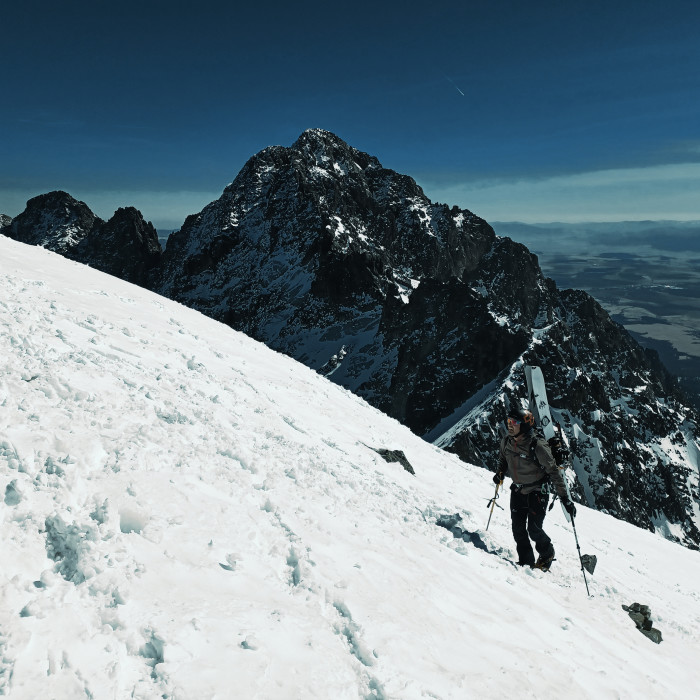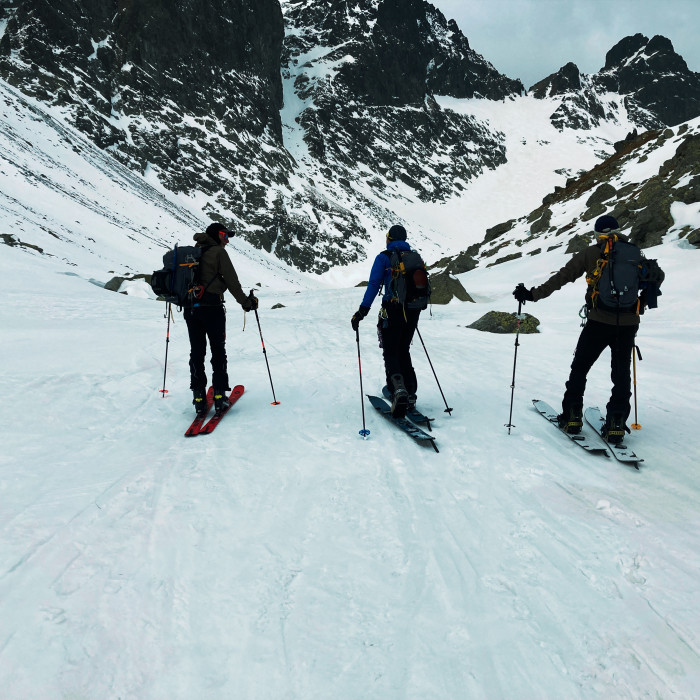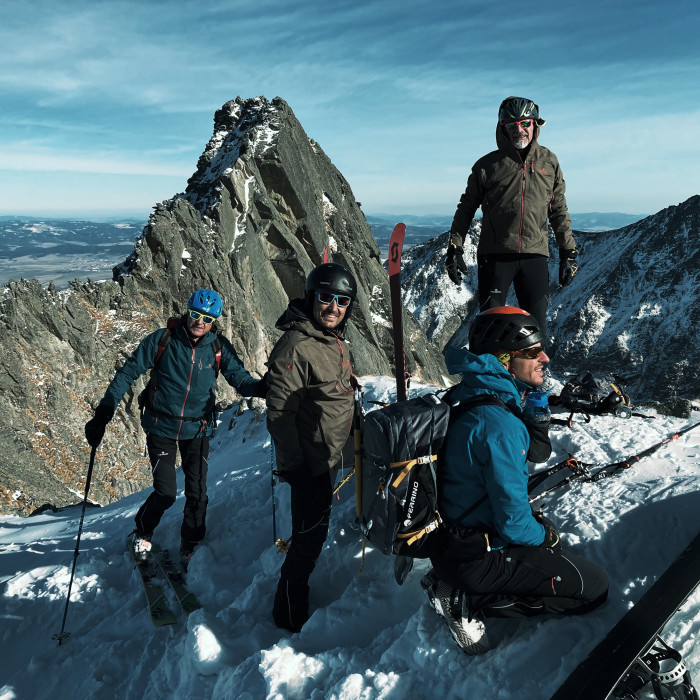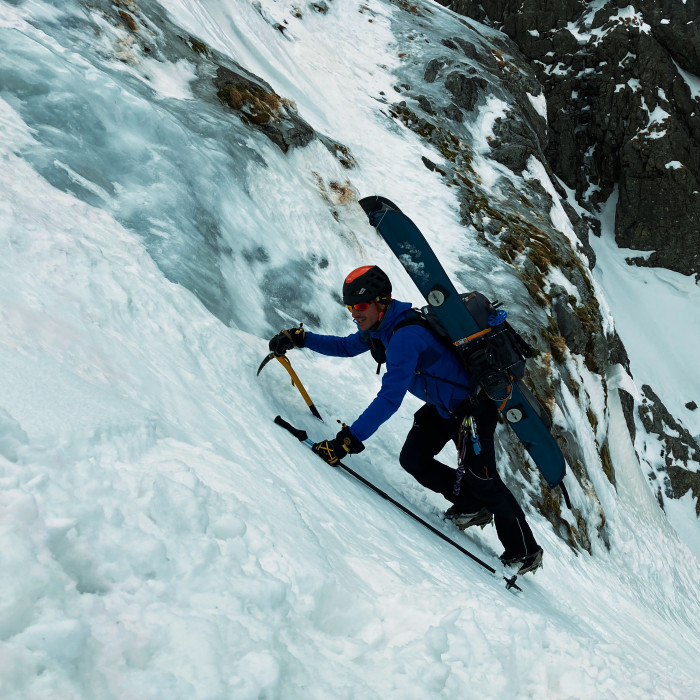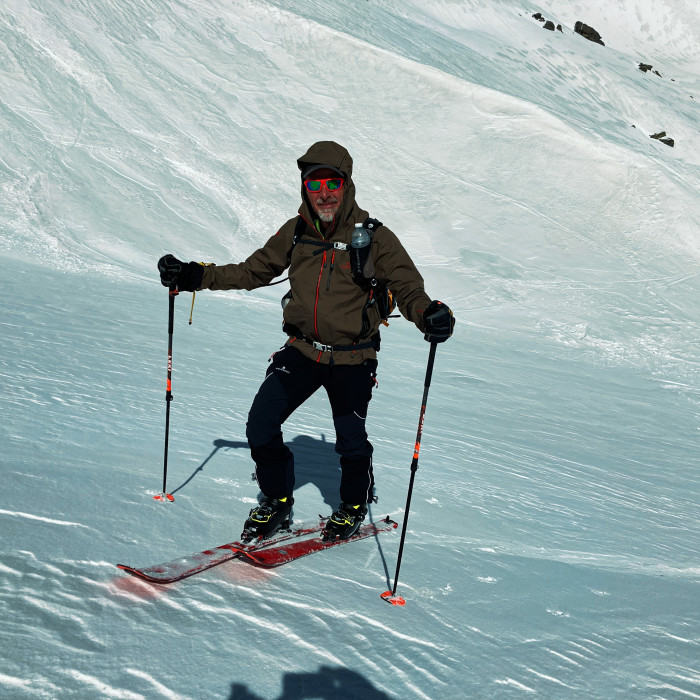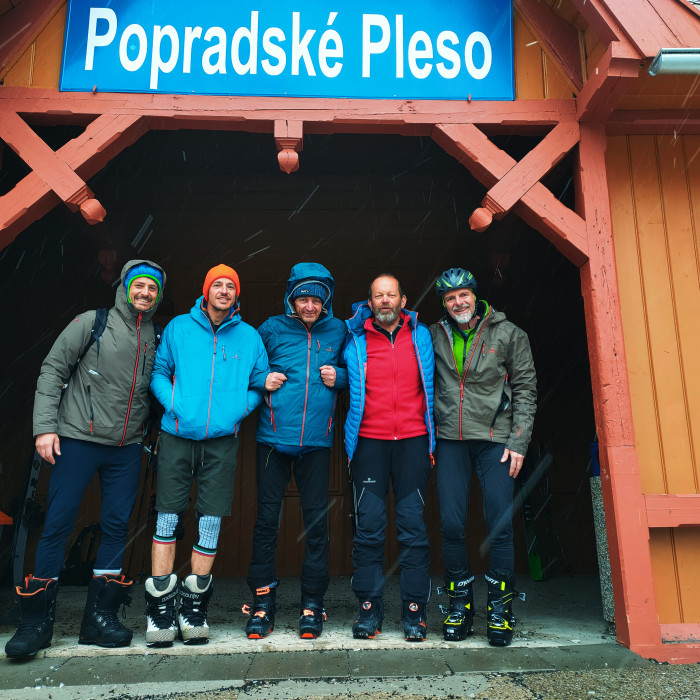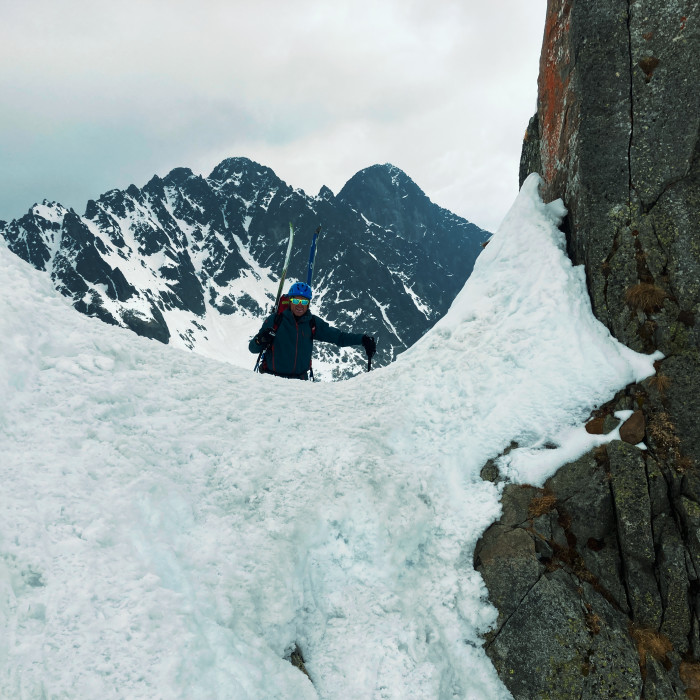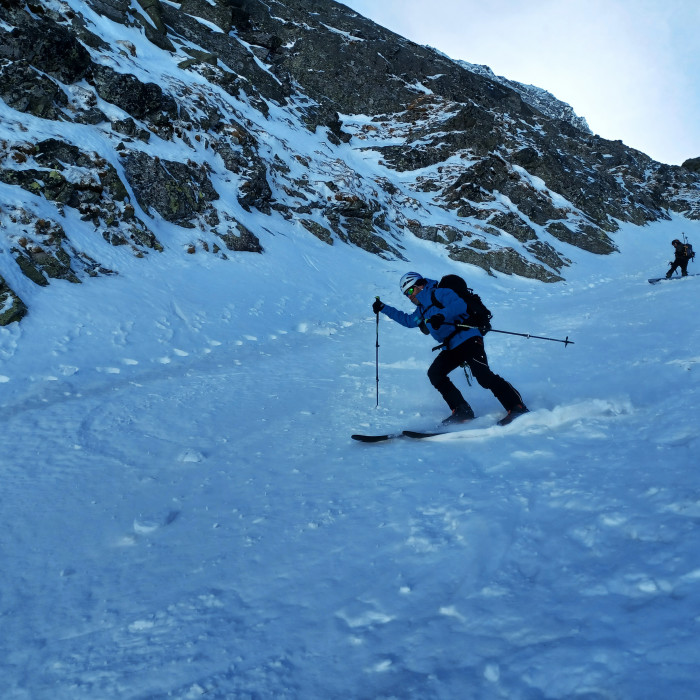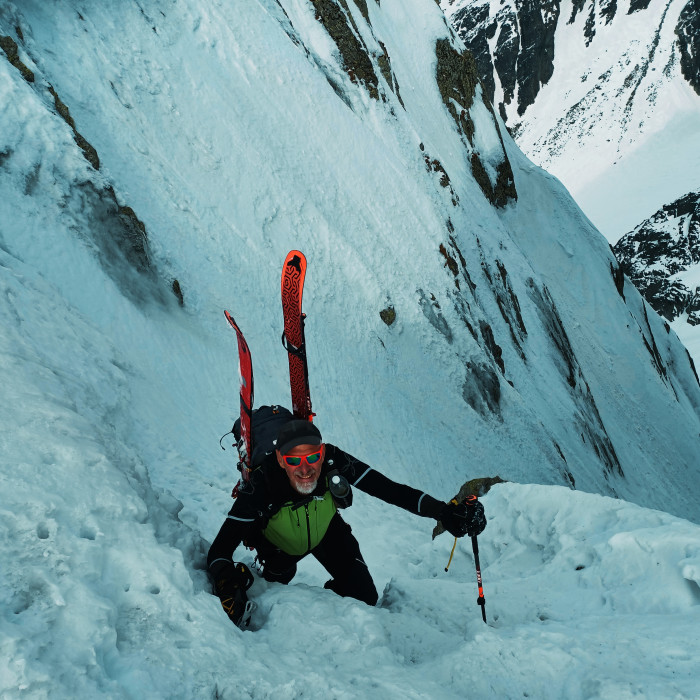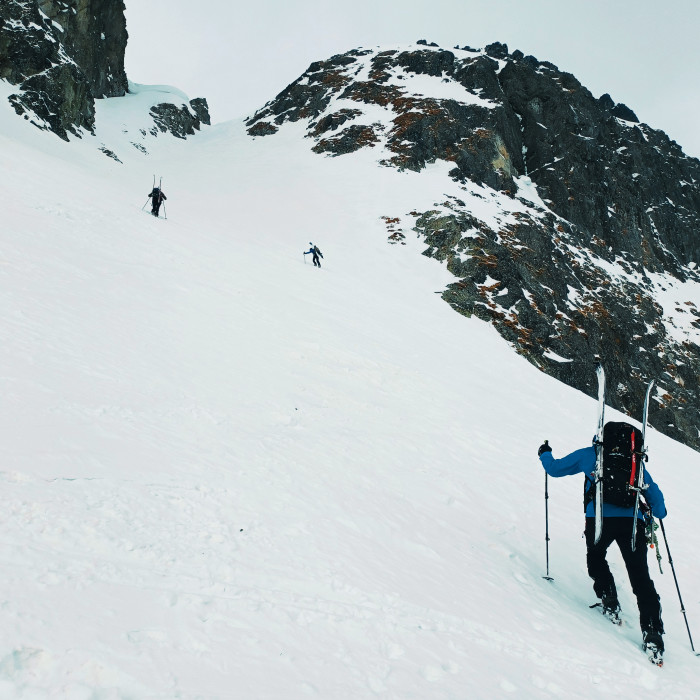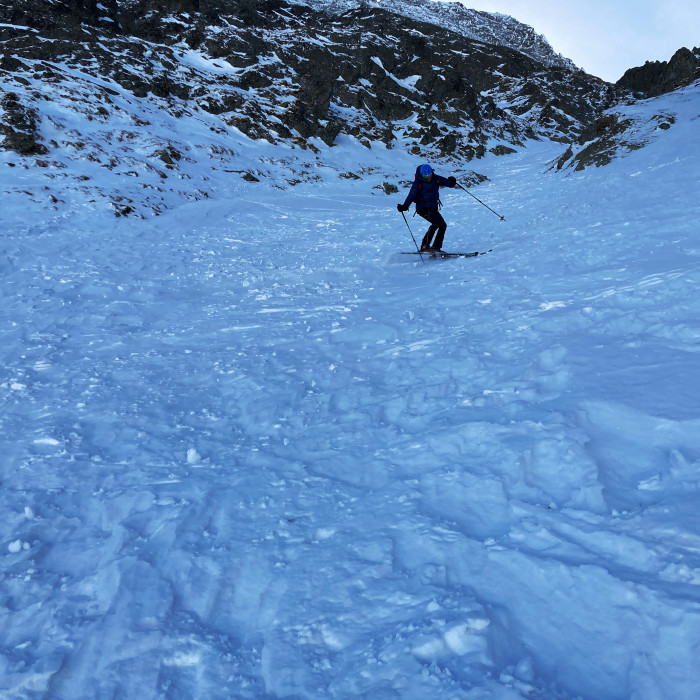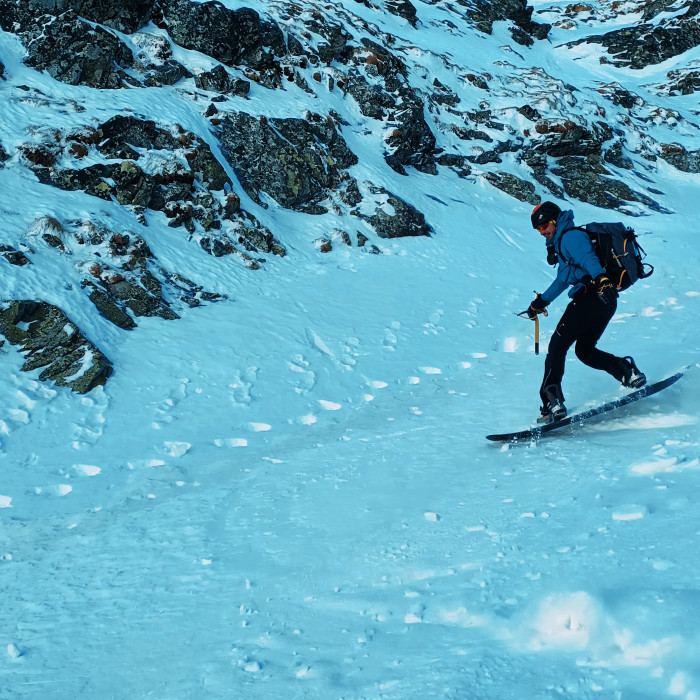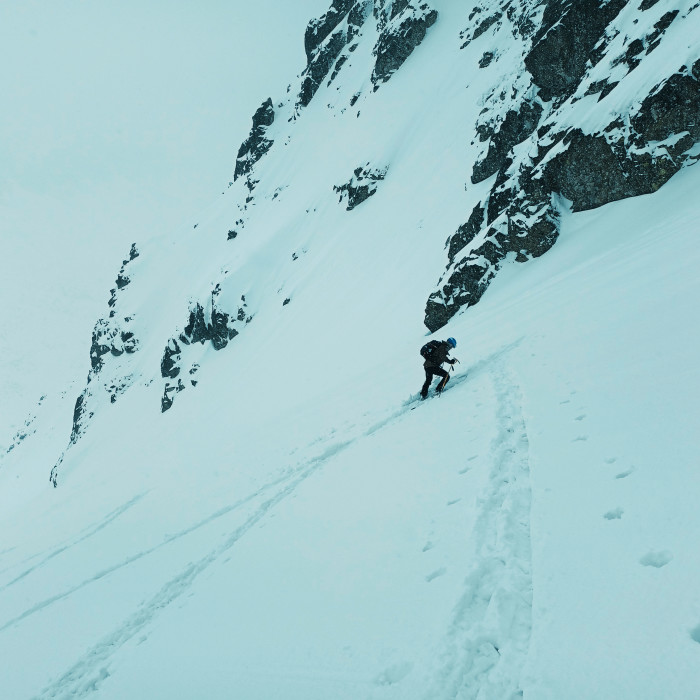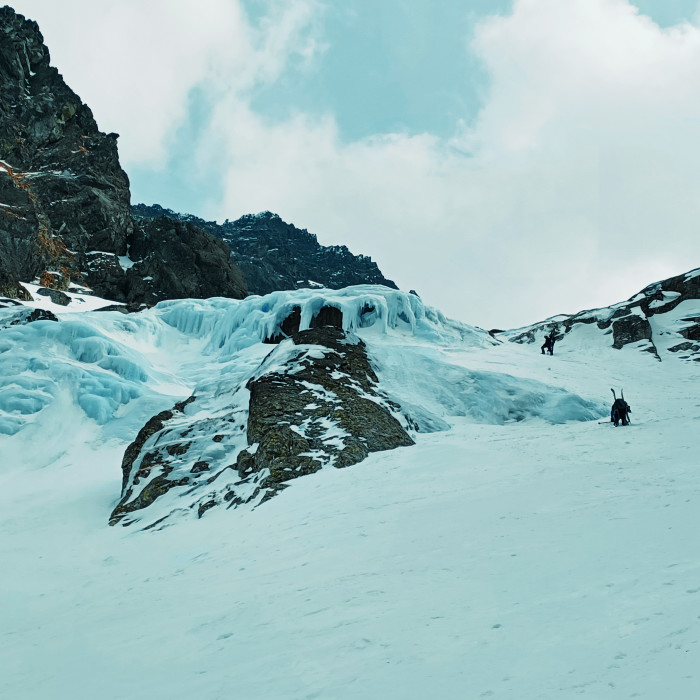
On skis in the wild heart of the Tatra Mountains
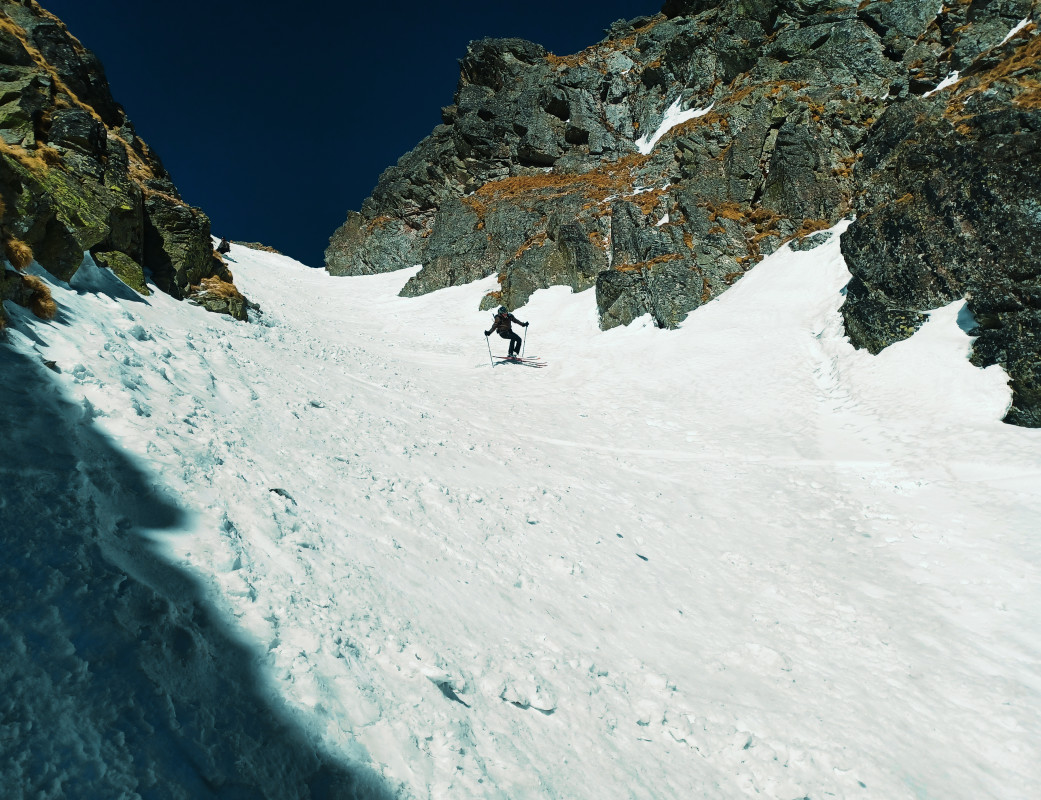
Five friends from Turin in search of adrenaline and adventure set off in a van to the wild Tatra mountains. In the boot they have backpacks, sacks and Ferrino clothes. Then skis, splitboards and seal skins. They want to experience an immersion in the heart of unfrequented mountains in pursuit of their passion.

The Tatra Mountains are a small chain about 60 kilometres long, the last offshoot of the Carpathians. The territory on which they rise, on the border between Poland and Slovakia, is included in the Tatra National Park, which covers an area of 738 km2. The central part, known as the High Tatras, is the one with the highest peaks, just over 2,600 metres (Gerlachovsky Stit, 2,655 m), with the most complex and mountaineering orography. The altitudes, modest in comparison to the Alps, should by no means suggest a relaxing traverse: this is challenging terrain, suitable for ski mountaineering for complete and experienced skiers. The entire chain is however well served, on both sides, by numerous well-positioned and well-managed refuges, open in the spring. We started looking into a ski mountaineering expedition to the Tatra mountains in January 2022, when the war in Ukraine seemed almost impossible. The outbreak of the conflict made us think about the possibility of practicing our sport in countries so close to the Ukrainian border, although not directly affected by the war. We concluded that life should not stop, especially at times like these, unless it is strictly necessary. On the contrary, we thought of giving our adventure an extra objective, human and supportive, in line with the values we have always sought in mountain activities. Having abandoned the idea of travelling by plane, we found a van, which we loaded in part with our luggage and equipment (thank you Ferrino!) but, above all, with all the materials needed by the refugees flowing into Slovakia from Ukraine. Filling the cargo space to the last cubic centimetre was possible thanks to the solidarity events organised by SASP and Verticalife, as well as the vast network of friends who enthusiastically participated. And so, on March 26th 2022, we left for Bratislava, where we delivered our cargo to a collection centre of the NGO Domov Na Mame, which provides aid to the thousands of mothers and children who cross the border in search of help. The Team To serenely face this kind of experience, the group must be a certainty, already broken-in in every aspect with hundreds of trips and dozens of raids. Here are the protagonists of this trip: Popino, the enthusiastic one, always positive even in the most difficult moments, totally 'Fabripolato'; Fabri, the Great Organiser, as always, strong and wise, with occasional recurrences of 'steep-sickness'; Lore, the indomitable, who stimulated us when necessary; Erni, the generous, capable of solving any technical problem; and Al, simply the best.

The Itinerary
The itinerary We set out with the idea of an east-to-west crossing in 6 days. The first four days were dedicated to crossing the High Tatras (the most interesting area), with short stages so that we could add a few tempting peaks or gullies each day. Then two long stages for the crossing of the Western Tatras, with its less rugged orography. But things, you know, don't always go according to plan...

DAY 1 - Torino - Bratislava - Tatranska Lumnica
The journey from Turin is a long one. Leaving at 4 a.m., we reach our Slovakian friends, in Bratislava, at 3 p.m. We unload all the material in the warehouse in Domov Na Mame and the satisfaction on the faces of the volunteers reassures us that what we have collected is useful. With the van much lighter, we are at dinner at the beautiful Maria's around 9pm, at her B&B near Tatranska Lumnica. About 14 hours net of traveling time are spent driving, eating and laughing.
DAY 2 - Biela Voda - Zelenom chata - couloir N anticima N Zmrzla - Belase pleso - couloir SW anticima W Kozi stit - Zelenom chata
Finally couloir! From Biela voda to the Zelenom Plese refuge (mt 1551 asl) it's just 650 metres of quiet ascent. We set off calmly at 9am, and at 11.30am we are at the refuge. We say goodbye to Petra, the pretty manager, who speaks Italian, lighten our rucksacks and set off again. The day is glorious, the conditions good: none of this is wasted. Behind the hut, a promising valley opens up and we traverse it, first ascending and descending the N couloir of the N anticima of Zmrzla Veza and then the SW couloir of the W anticima of Kozi Stit. The first is of difficulty 4.1 E1 on about 250 metres, with good pressed powder that is still cold; the second is of difficulty 4.2 E1 on about 200 metres with transformed snow that is a little cooked but very enjoyable. We returned to the refuge around 4pm, satisfied. Total positive altitude difference 1650 metres. A sumptuous dinner of more than decent quality balances out the calories spent with considerable interest!

DAY 3 - Zelenom chata - couloir N Lomnicka vezicka - Baranie sedlo - Baranie rohy - Teryho chata - couloir E L'adovy stit - Teryho chata
From Zelenom plese to Teryho chata via the Baranie pass and the summit of Baranie rohy. The ascent height difference of the traverse is 950 metres, so today too we can allow ourselves a small digression. On the ascent to the Baranie sedlo we turn left to enter a beautiful couloir that we had spotted yesterday. This is couloir N of the Lomnicka vezicka. Unfortunately, an icy goulotte prevented us from leaving at the saddle but it is 400 metres of splendid couloir at a constant 45°/40°. Compressed powder snow, excellent. Difficulty 4.3 E2. Splendid environment. Back on the original route, we reach the Baranie pass and then the beautiful Baranie rohy summit. From here, skis on our feet, we begin our descent to the Teryho chata hut. Here too, beautiful spring snow has been found. From here Fabri and Ernesto, tireless, again climb to the summit of the Adovy stit via the E gully, which, however, being already in the shade, is frozen and does not offer a good descent at the top. Their effort is rewarded, however, by an enchanting panorama in the meridian light. In the meantime, the other three of us down several beers, awaiting them for dinner. In the end, the ascent height difference is 1550 metres, plus 600 for the Adovy stit, 2150. Despite the fact that the two mountain innkeepers are rather gruff, dinner is anything but bad.

DAY 4 - Teryho chata - Priecne sedlo - Zbojnicka chata - Prielom - Zelene Kacacie pleso - Vychodna Zelezna brana - Snezna kopa - Horsky hotel Popradske pleso
It's the day of the big decision! The weather forecast still says fair today, then from the evening onwards it's bad and stable with precipitation, for at least 5/6 days. We decide to merge the next two stages into one and avoid the last two days of the long crossing in the western Tatras, replacing them with two day trips to the beautiful Mengusovska dolina from Popradske Pleso. Today, therefore, a double stage with three short but intense passes. This stage was characterised by constant changes between skins, crampons and skis. Beautiful environment. The middle part of the last ascent is characterised by a large icefall which seems to bar the way and has us well and truly worried. In reality, as we get closer, we realise that there is a passage, (invisible from below), which can be easily traversed on snow with crampons. Very aesthetic. Finally, a beautiful, short ascent without skis to Snezna Kopa, ice axe and crampons required, great views. Then the long, classic descent to Lake Popradske, the final point of the High Tatras crossing, and accommodation in the curious hotel/refuge of the same name. Huge, very comfortable, well heated, with hot showers, very nice from the outside, ex-communist aesthetic inside. A little impersonal but well run. Self-service restaurant where you eat very well and drink huge beers. Positive height difference for the day 1500 metres.
DAY 5 - Horsky hotel Popradske pleso - Rysy - couloir NE selletta N Satana - Horsky hotel Popradske pleso
From the Horsky hotel Popradske Pleso, double trip: first to Mt. Rysy and then to the N Selletta of Mt. Satan via the NE couloir. Classic ski mountaineering trip, difficulty OSA, to Rysy, positive height difference 1000 metres, with an exposed passage halfway up (there is a fixed rope maintained by the hut above, crampons). The last 100 metres again with ice axe and crampons following the summer path below the ridge. Beautiful Christmas snowfall and zero views from the summit. We are with one foot in Slovakia and one foot in Poland, straddling the border line. Once again, we realise how much nature doesn't give a damn. Descending to an altitude of around 1650m, we aim for the cyclopean cone below M. Satan and the NE gully, not visible from the valley floor but clearly visible from the slopes of M. Rysy. Difficulty 4.3 E2 over about 400 metres. We can't get out at the saddle because the last 10 metres are snowless and icy (positive altitude difference 700m). But what a descent! 350 metres of gully at a constant 45° + 350 metres of endless super-skiing on the cone polished by the freshly fallen snow. Peak of enthusiasm in our little group.. Total positive height difference 1700 metres

DAY 6 - Horsky hotel Popradske pleso - couloir SW colletto S Mengusovsky Volovec - couloir NE selletta NW Predna Basta - Horsky hotel Popradske pleso
Again from the Horsky hotel Popradske Pleso, double outing: first to the S saddle of the Mengusovsky Volovec for the SO couloir, diff. 4.1 E1 and then to the prestigious Selletta Nw of the Prednà Basta, for the NE couloir called "Rosso" (mt 2350 asl) diff. 5.1 E3. Two beautiful couloirs, which we had been eyeing for the previous 2 days. Excellent for skiing even when there is a bit of fog. The first is very easy and classic, starting to the right (SO) at the beginning of the Mengusovska valley. Positive height difference 700 metres from Popradske, of which 300/350 metres is a 40° couloir, the exit to the saddle is a little straighter. After descending to the valley floor, we split up. Two of us head for Prednà Basta. I had promised Fabri yesterday and now I had to do it, even though the gully he has fallen in love with seems too narrow at the top, and also a little too straight, although aesthetically splendid. From the bottom of the valley it is about 750 positive metres, 600 of which are gullies. The lower and middle sections (approx. 450 metres) are wide, about 40 and 45 degrees. In the upper 150 metres, the gully narrows and becomes 50° (55 on the way out) with 2 bottlenecks about 2 metres wide (current snowfall). I think about stopping at the bottleneck and so I do. Fabri, highly motivated, continued to trace up to the saddle and soloed down the entire difficult gully. Chapeau! I wait for him, jumping for the cold under the thick snowfall. Together we set off on one last long, truly spectacular descent, between the rock walls, with 30 cm of freshly deposited snow for us! We howl at the top of our lungs. Happiness. At the Popradske Hotel, our friends are waiting for us and the usual fantastic shower, followed by huge beers and an excellent omelette. At 5.30 pm, the shuttle takes us back to the road, where our Maria picks us up to take us back to Tatranska Lumnica for our last Slovakian dinner.

DAY 7 - Tatranska Lumnica - Torino
The long journey back offers time for some final reflections. These days have, as always and everywhere in the mountains, soothed our spirits. Waking up at dawn, the long days spent outdoors in an unspoilt environment, the fatigue of the climbs, the fun of the descents, the dinners and nights in the huts, the encounters with other mountaineers and hut managers, the cohesion of our group: all these elements, and more, swept away the shadows that the war situation in Europe had cast over us. But the return to civilisation was like a plunge into icy water: two refugees from Ukraine, mother and daughter, were guests at the B&B of the beautiful Maria. Two very normal people, respectively 60 and 40 years old, from a reality in every way similar to ours, told us about the terrible choice of having to leave their lives in little more than 10 minutes. Leaving without even clinging to the hope of return... a tangible but improbable scene, out of all logic in our current dynamics of daily life. But can war still be waged? We only realise today that it is so close, and yet the world is always and continually the scene of it. Yesterday in the mountains peace, today outside war. A silly thought occurs to me. What if these mountain ranges, considered by hierarchs only useful borders to divide, were taken as an example for how they unite the peoples who inhabit them in a necessary but harmonious collaboration? If the landmasses were one huge mountain system, would there still be room for war? Useless utopia, of course... but we wish everyone to experience at least once in their life the curiosity, fun, adventure, solidarity and mutual trust that the exploration of a mountain territory, anywhere on Earth, can generate!

Share this article
